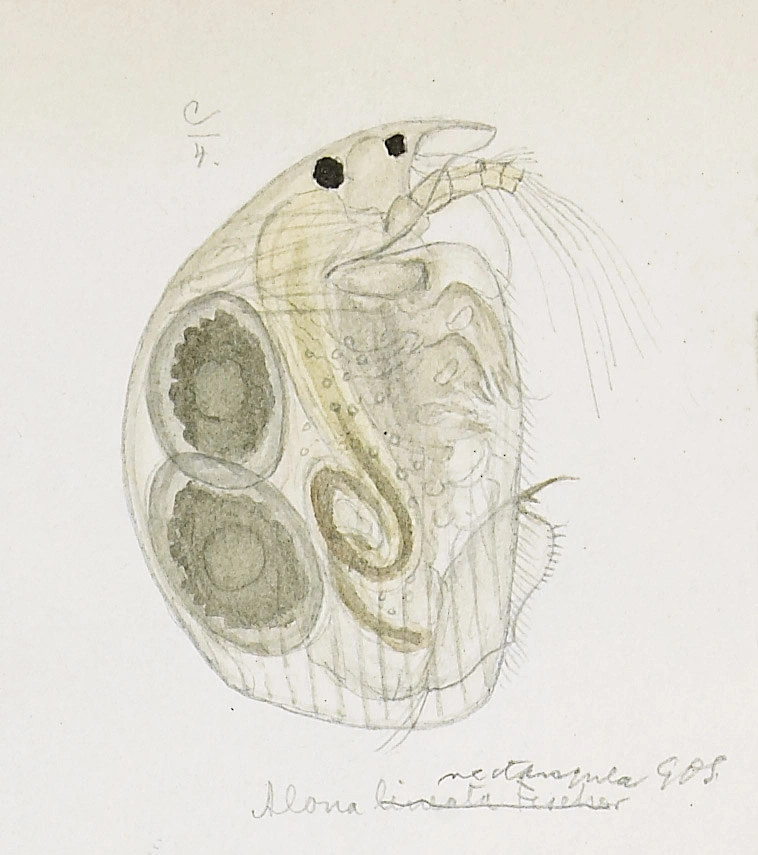Alona rectangula
The name of Alona rectangula reflects the shape of its body which is squarer than any of the other Alona-species. It is spread all over the country and is characterized as a very acid sensitive species.
Key characteristics
Alona rectangula (female)
The name of Alona rectangula reflects the shape of its body which is squarer than any of the other Alona-species. Its carapace is broadly striated. The postabdomen is short, and, unlike A. guttata, it is rounded and does not project in a rather strongly protruding, sharp corner. The spine at the base of the abdominal claw is larger than in A. guttata. It has a greenish-grey or flaxen colour, often with a tinge of brown.
Female: Length 0.2–0.5 mm
Male: Length 0.2–0.4 mm
Ecology and distribution
A. rectangula is a littoral species found in about 7 % of the water bodies. It is spread all over the country, and is recorded both from continental areas and localities near the coast. It is found in water bodies of all sizes from sea level and up to the alpine zone (1158 m a.s.l.) with the highest frequency between 100 and 300 m a.s.l (11 %). It is characterized as a very acid sensitive species. Though it has been found at pH 4.8, it occurs with highest frequency in waters with pH above 7.0. A. rectangula is associated with lakes that are rich in calsium (mean 15 mg/l).
| Vitenskapelig navn | < 4,5 | 4,5 - 4,9 | 5,0 - 5,4 | 5,5 - 5,9 | 6,0 - 6,4 | 6,5 - 7,0 | 7,0 - 7,4 | > 7,5 |
|---|---|---|---|---|---|---|---|---|
| 0 | 0,9 | 1,1 | 3,6 | 5,9 | 8 | 15,7 | 23,8 |
| Vitenskapelig navn | < 1,0 | 1,0 - 1,4 | 1,5 - 1,9 | 2,0 - 2,9 | 3,0 - 3,9 | 4,0 - 4,9 | 5,0 - 6,9 | 7,0 - 9,9 | > 10,0 |
|---|---|---|---|---|---|---|---|---|---|
| 0,7 | 0,8 | 3,2 | 3 | 4,3 | 6,8 | 13,5 | 13,9 | 21,6 |
| Vitenskapelig navn | < 0,01 | 0,01 - 0,09 | 0,1 - 0,9 | 1,0 - 9,9 | 10,0 - 99 | 100 - 999 | > 1000 |
|---|---|---|---|---|---|---|---|
| 11,8 | 8 | 6,1 | 6,9 | 5,1 | 7,9 | 6,5 |
| Vitenskapelig navn | < 100 | 100-299 | 300-499 | 500-699 | 700-999 | >1000 |
|---|---|---|---|---|---|---|
| 9,5 | 10,8 | 3,8 | 2,7 | 3,2 | 1,1 |
Look-alikes
Alona guttata

